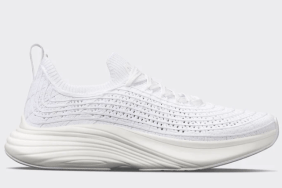If you prefer lying on a beach to sweating through Kayla Itsines’ bikini workout — or can’t imagine having the time to do either — this one’s for you. A recent 12-week study by researchers at McMaster University in Hamilton, Ontario suggests that in 60 seconds’ time you can reap the same cardiovascular and insulin sensitivity benefits as you would after 45 minutes of moderate exertion — the key is to grind like hell for that one minute. Call it the go-hard-then-go-home method, patent pending.
Experts have touted the benefits of high-intensity interval training (HIIT) for nearly half a century. HIIT consists of a short but extremely draining burst of exercise — essentially to the point of muscle failure — followed by a light exercise or rest period, followed by another grueling if brief phase, and so on and so forth until you’re either the Rock or vomiting on AstroTurf.
Various studies have expounded the benefits of interval training over extended workouts, with the suggested time of intervals growing ever shorter. In a world where, essentially, no one feels they have enough hours to devote to the gym, HIIT methods have taken off. While the one-minute interval seems almost too good to be true, the scientists at McMaster University, veterans to the study of interval training, were sure to cover all (well, most) of their variable bases.
The participants were 25 out-of-shape (“sedentary”) men. (27 to begin with, but two dropped out due to “reasons unrelated to the study” — Read between the lines.) After measuring their current aerobic fitness and their body’s ability to use insulin to regulate blood sugar levels and even performing biopsies on each of the men’s muscles so as to examine their cellular function, the researchers divided the subjects into three groups. The first, a control group, was told to continue in its exercise-free ways. The second group started on a typical endurance-workout routine: 45 minutes of stationary cycling, flanked by a two-minute warm-up and a three-minute cool down. The final group did the interval training: two minutes of warm up on stationary bikes, hard pedaling for 20 seconds, followed by a two-minute recovery period, all-out pedaling for another 20 seconds, followed by another recovery period, followed by another bout of manic pedaling, followed by a final three-minute cool down. Of the ten-minute HIIT workout, only one minute required effort. Pointing and laughing at members of group two was highly discouraged.
After 12 weeks completing 3 sessions a week — a total of 27 hours of riding, 6 hours of riding (only 36 minutes of which was strenuous), or innumerable hours spent binge-watching TV, depending on your group — the men gathered for testing. All those who exercised showed nearly identical results. Their endurance increased by almost 20 percent, their insulin sensitivity also improved and, from what we remember of high school biology, we suppose there were more mitochondria in their muscle cells or something along those lines. Basically, after only three months of exercise, both groups were equally healthy, even though the HIIT group spent about 21 hours less on a bike.
“Most people cite ‘lack of time’ as the main reason for not being active,” said Martin Gibala, professor of kinesiology at McMaster and lead author on the study. “Our study shows that an interval-based approach can be more efficient—you can get health and fitness benefits comparable to the traditional approach, in less time.”
Enjoy the next few months of waiting for the researchers to replicate this study using women before you officially have zero excuse to skip the gym.
[ via The New York Times ]








